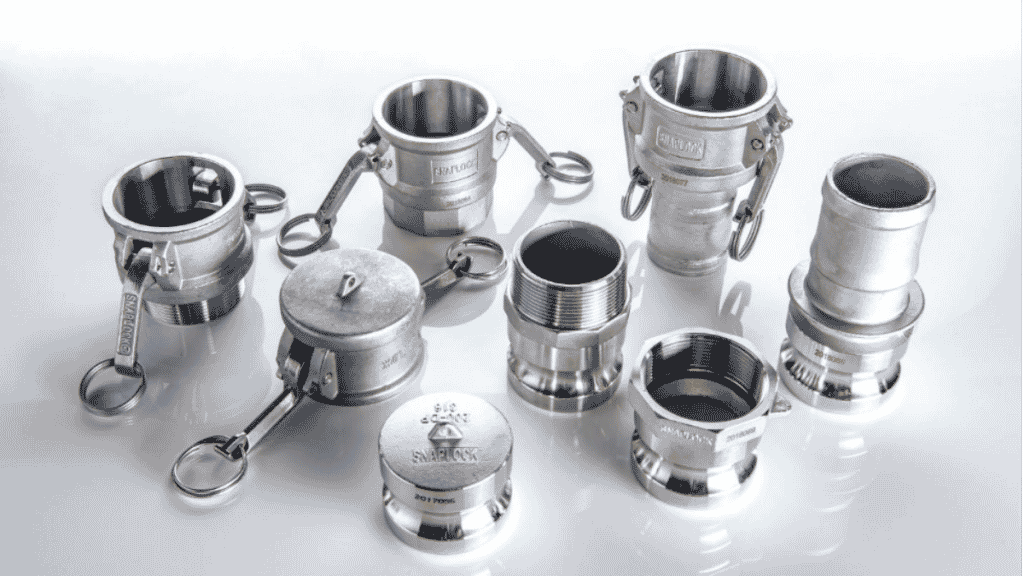Cam and groove couplings, also widely referred to as Camlock fittings, are used for multiple industrial purposes. Camlock fittings primarily help connect pipes or hoses and ensure that the transfer of commodities between them is smooth and safe. Additionally, they allow easy connection and removal methods as well.
However, a prime question faced by most manufacturers is the best material to use for Camlock fittings. A common debate is between Polypropylene Camlock fitting and nylon Camlock fitting. Both options will be discussed here in detail.
Comparison between PP Camlock Fittings and Nylon Camlock
Between numerous different Camlock Connectors, there is always a debate about the use of PP Camlock fittings and nylon Camlock. First, let us consider the PP Camlock fittings.
. PP Camlock Fittings
Polypropylene Camlock coupling uses plastic divided into the form of polypropylene. This way, the fittings have a beautiful appearance, making them effective for external use. Using high-quality NBR ensures that this coupling is suitable for high-quality NBR.
Additionally, this Camlock coupling is low density, anti-acid/anti-alkali, and has considerable chemical stability. These factors, coupled with its anti-aging properties, make it suitable for long-term use. Another unique characteristic here is electrical insulation which means that their smooth surface can offer great transfers in electrical environments. Finally, their hot melting rate offers smooth transfers as well.
Another major benefit is that the coupling is lightweight and still extremely leak-proof. Concurrently, the operation is easy, and the prices are very low. However, PP Camlock fittings may be easy to deform and have low strength. Therefore, using it for the transfer of high-density fluids is questionable.
. Nylon Camlock Fittings
Nylon Camlock fittings have most of their features common to PP Camlock fittings. These couplings are lightweight, easy to use, and economical. Concurrently, they maintain the leak-proof characteristic as well.
However, some aspects make nylon Camlock fittings different from the PP ones. First, they offer high resistance and can withstand dirt, dust, and other erosive materials for a considerable time. It offers great resistance to solvents, saltwater, treated water, and gasoline, making it a suitable choice for transferring these items.
Additionally, it offers great flexibility as an additional benefit. Similarly, they have a higher density than PP Camlock fittings, making them suitable for heavier fluids. Changing humidity does not have a major effect on these Camlock fittings, and they offer a high level of dimensional stability.
Common Application of Camlock Fittings
Both Nylon Camlock fittings and PP Camlock fittings are used interchangeably in acidic or alkaline environments, based on the specific context. The chemical industry uses them in liquid transmission. Finally, they offer a good connection tool for pipes used in agricultural irrigation and related uses.
However, the unique characteristics of each type must be considered when forming the application. For example, PP Camlock fittings will be the preferred option in electrical environments. On the other hand, the transfer of gasoline and slurry mixture will be better suited to Nylon Camlock fittings.
Where to Start?
Union Metal has been serving in the Camlock fittings manufacturing industry for a long time and has developed a positive reputation for its product quality and variety. It offers all types of coupling items, including PP and nylon coupling materials.
With an experience of 15 years in the manufacturing industry, Union Metal supplies high-end Camlock fittings to many different types of clients. Contact Union Fittings today and get the best Camlock fitting per your need.
